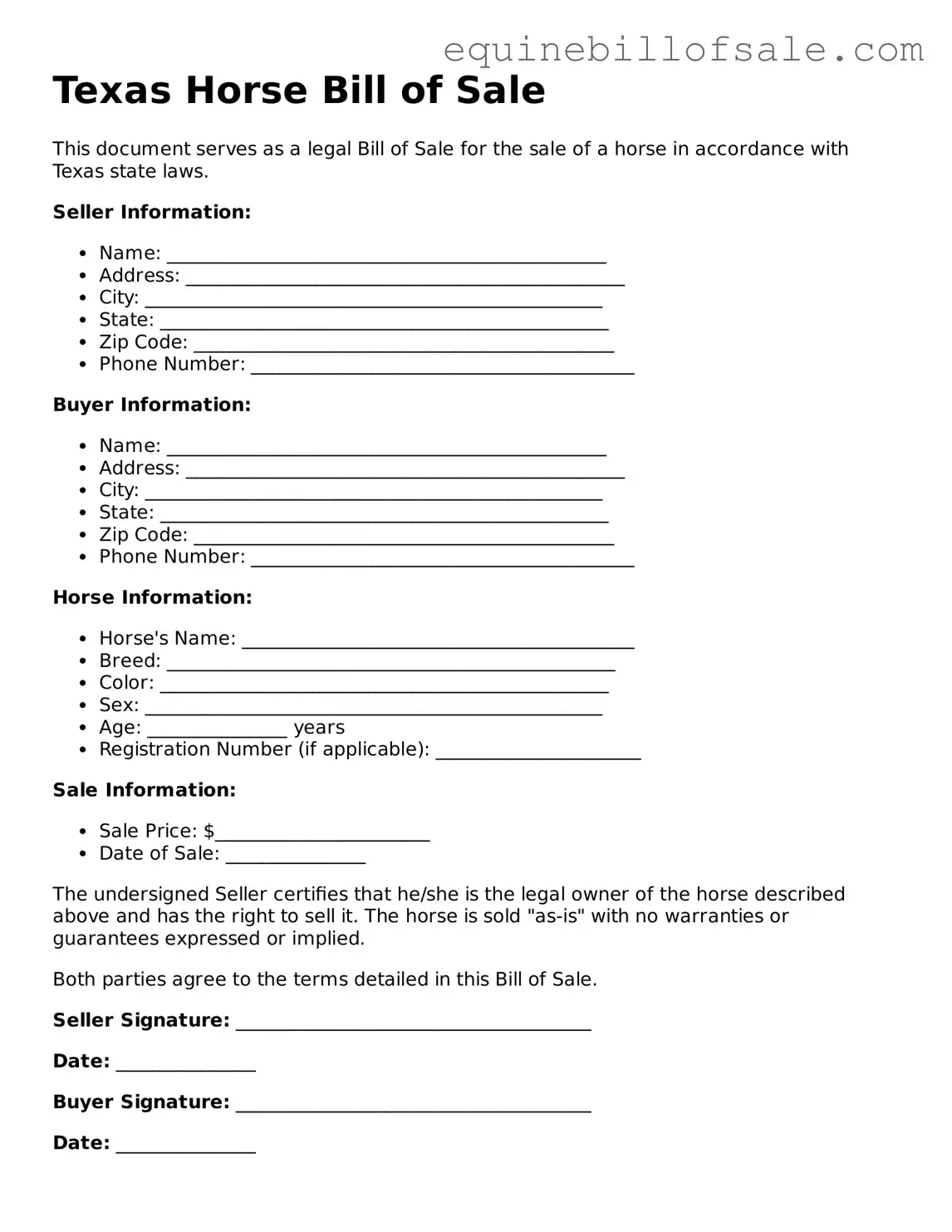What is a Texas Horse Bill of Sale?
A Texas Horse Bill of Sale is a legal document that serves as proof of the sale and transfer of ownership of a horse. This form includes essential details such as the buyer's and seller's information, a description of the horse, the sale price, and the date of the transaction. It protects both parties by documenting the terms of the sale.
Why is a Bill of Sale necessary for horse transactions?
A Bill of Sale is important for several reasons. It provides legal evidence of ownership, which can be crucial for registration purposes or in case of disputes. Additionally, it outlines the terms of the sale, including any warranties or guarantees regarding the horse's health and behavior, which can protect the buyer.
What information should be included in a Texas Horse Bill of Sale?
Essential information includes the names and addresses of both the buyer and seller, a detailed description of the horse (including breed, age, color, and any identifying marks), the sale price, and the date of the transaction. It may also include any conditions of the sale, such as health guarantees or payment terms.
Is the Texas Horse Bill of Sale form required to be notarized?
While notarization is not a legal requirement for a Bill of Sale in Texas, having the document notarized can add an extra layer of protection. A notarized document verifies the identities of the parties involved and can help prevent future disputes regarding the authenticity of the signatures.
Can a Horse Bill of Sale be used for other types of livestock?
Yes, while the Texas Horse Bill of Sale is specifically designed for horses, similar forms can be adapted for other types of livestock. However, it is important to ensure that the form is tailored to meet the specific requirements and details pertinent to the type of animal being sold.
What happens if the horse is found to have health issues after the sale?
The Bill of Sale should clearly state any health guarantees or warranties provided by the seller. If the seller has provided a guarantee, the buyer may have grounds to seek a remedy, such as a refund or compensation. If no such terms are included, the buyer typically assumes the risk for the horse's condition after the sale.
Where can I obtain a Texas Horse Bill of Sale form?
Texas Horse Bill of Sale forms can be obtained from various sources, including online legal document providers, local equestrian associations, or through legal offices. It is essential to ensure that the form complies with Texas laws and includes all necessary information for your specific transaction.
